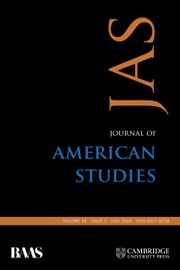For the past several decades, feminist scholars have understood religion and religious identity to be in direct opposition to women's agency and self-determination. Ironically, during the nineteenth century, women who demonstrated too strong a religious adherence were cause for concern, because such fervor might present an obstacle to marriage and domestic order. To ignore how deeply embedded women's agency – both in the nineteenth century and in our own time – is with religious agency overlooks a significant factor in women's self-expression and movement through public and private life.
In this book, Ashley Reed presents novels by nineteenth-century women writers as a site of religious agency, one that is not in tension with other forms of agency. Reed makes a valuable contribution to the field of nineteenth-century literary studies, in which she observes scholars reading “not for religion but around or even against it” (2, original emphasis). Rather than treat religion as a solely oppressive force in women's lives, Reed considers it as both a personal choice and an imaginative stance in which women can consider their own ways of being in relationship and in the world.
In Heaven's Interpreters, Reed offers a mode of “secular reading” that recognizes women's religious agency and how religious beliefs affect authors’ and characters’ experience of their communal, temporal, and eternal realities (16). Secular reading is not to be confused with what Reed calls the “secularized reading” that has characterized literary studies for the past several decades. For Reed, secular spaces are those in which religious impulses combine with other kinds of motivations to offer multiple possibilities for being and awareness, rather than spaces from which religion has been forcefully evicted. Secular reading also differs from Edward Said's model of “secular criticism” to offer religiosity as a source of imaginative possibility rather than a failure of critical investigation.
Reed frames her analysis of the nineteenth-century texts that form the scope of her study with an argument about how our misreading of these texts and their women characters has brought us to our present moment. Whereas a secular reading yields an understanding of women who exercise agency through community and relationship, a reading that maps onto political liberalism misunderstands the goal of all women and women characters to be pure self-determination, an ideal that Reed identifies as illusive. From this latter perspective, religious women – and especially non-Western religious women – are seen as in need of liberation, of casting off oppressive religious commitments in order to better align themselves with the ideals of white supremacy and Western exceptionalism.
The difficulty of adopting a secular reading mode becomes immediately apparent in Reed's first chapter, on early national historical novels, including Lydia Maria Child's Hobomok (1824), and Catherine Maria Sedgwick's Hope Leslie (1827) and The Linwoods (1835). Each of these novels explores the idea of embodied sacrifice by already marginalized people: women, people of color, children, and poor people. Whereas a secularized reading might find the idea of sacrifice as central to a religious narrative, Reed reads Hope Leslie, for example, as a declaration that biased ideas of sacrifice must be “exploded entirely” and replaced by a new orientation toward community, nationhood and belonging (41). She finds alignment here with Unitarian thought that moves away from atonement and Christ's divinity toward a less sacrificial emphasis on right behavior.
These ideas of how religion informs women characters’ ideas about how to live in the world and treat their fellow humans becomes especially slippery when applied to abolitionist texts. Reed correctly identifies the deep involvement of religion in the system of slavery, naming it a theological system as much as a legal and economic one. Slaveholders assumed god-like authority over their slaves, and justified their oppression over “heathen” races (99). In Reed's chapter on Harriet Jacobs's Incidents in the Life of a Slave Girl (1861), she traces Jacobs's efforts to undermine slavery from a theological perspective. Within the context of Sadiya Hartman's resistance to a celebration of autonomy being mapped onto enslaved characters, Reed shows Jacobs's protagonist, Linda Brent, as appealing to white women readers through a call to witness her enslaved humanity. Although Reed does important work to show the risks of “epistemic violence” in conflating autonomy with agency for free white women, and even more for enslaved black women, the chapter gives a false impression that somehow these two experiences and orientations toward Christianity were somehow in harmony with each other rather than often being in direct conflict.
Overall, Reed does important work to uncover how ideas about women's agency and self-determination are wrapped up in a history of American evangelicalism and religious thinking. Her book forges a path of inquiry that invites more questions about how Americans understand their own relation to religion, and about a history that has idealized a separation of church and state without ever achieving it. Reed urges us to recognize contemporary women's religious agency, even within such patriarchal structures as the modern evangelical movement and Islam. Women engage with and live through these structures, and therefore their agency is present within them.



